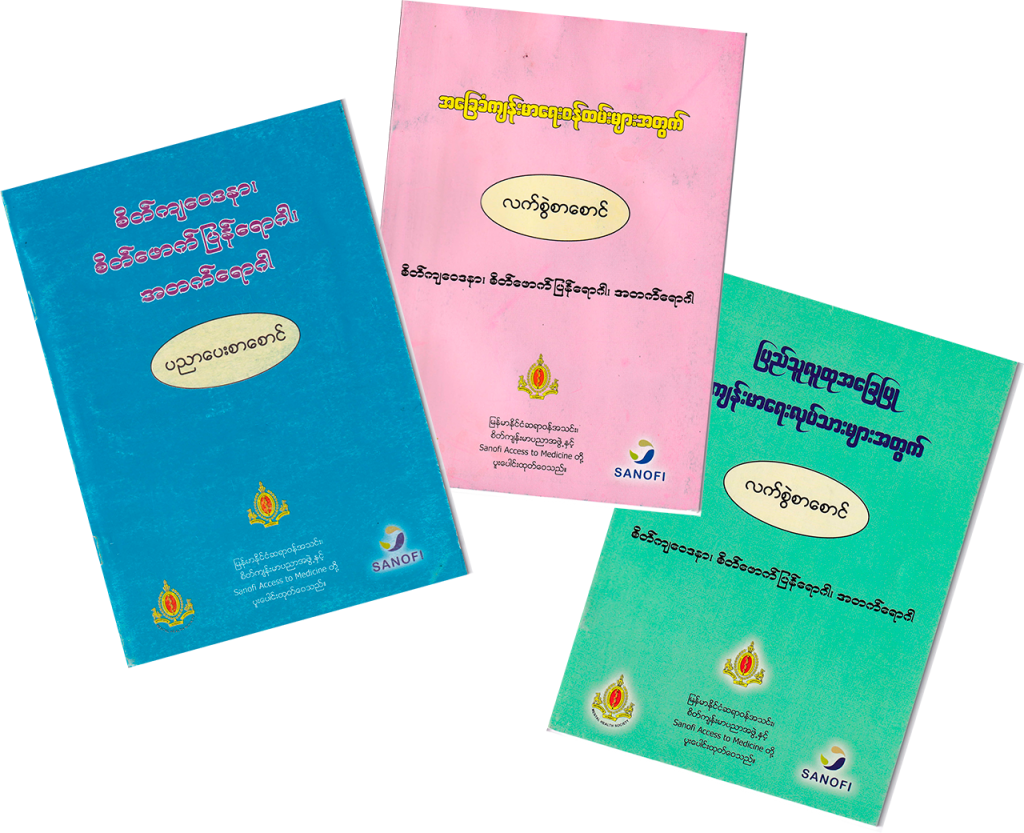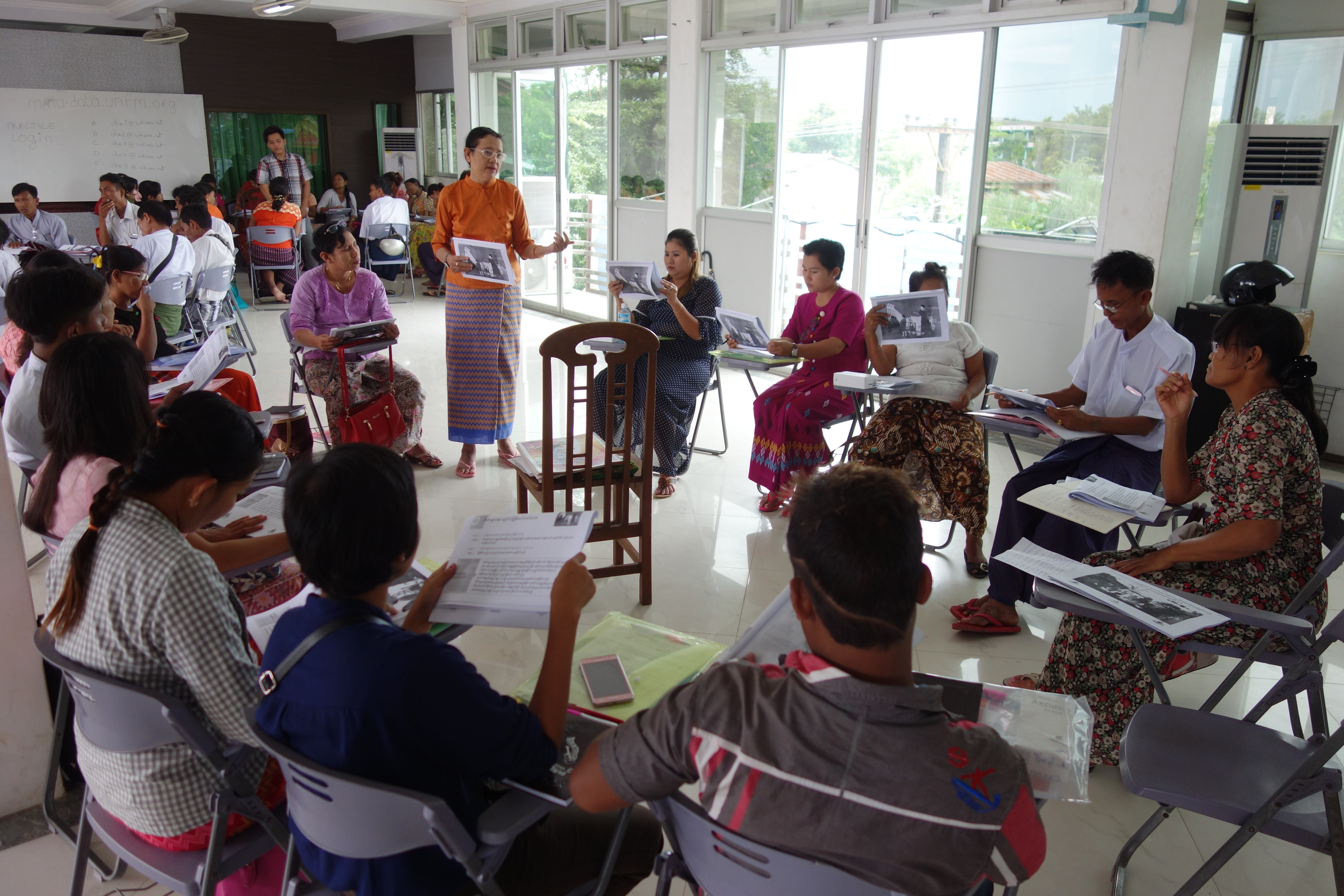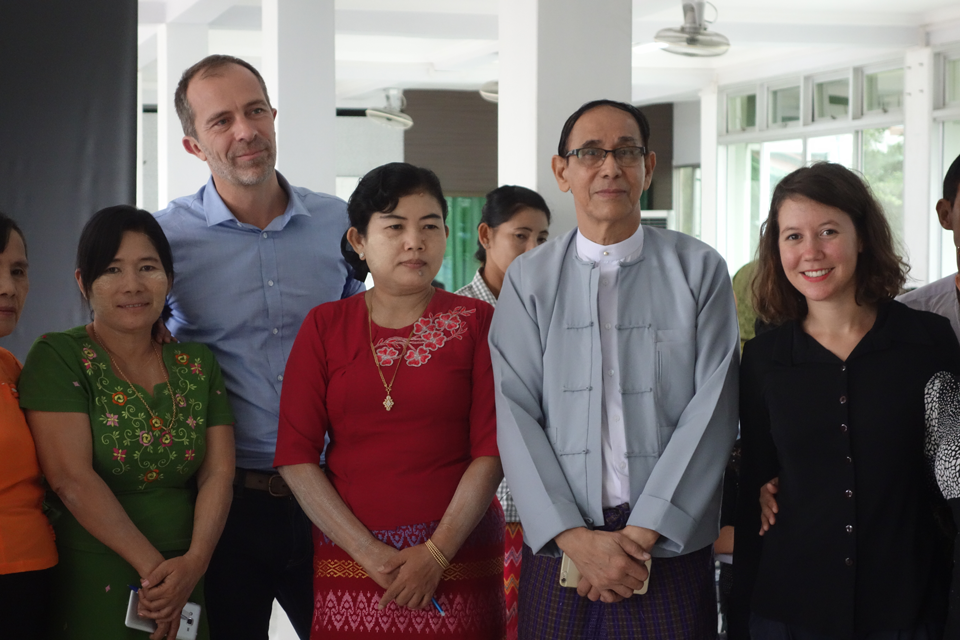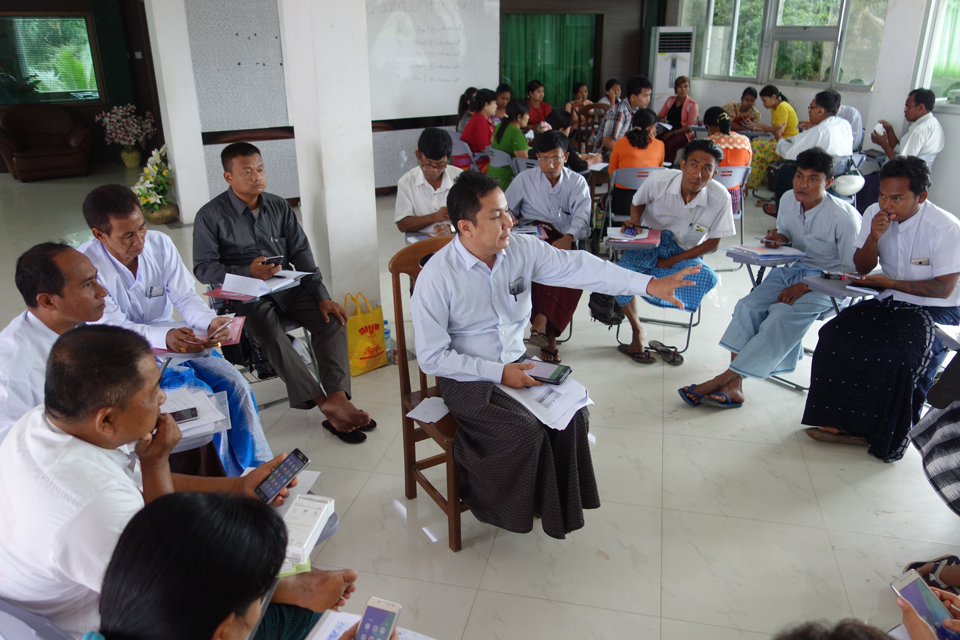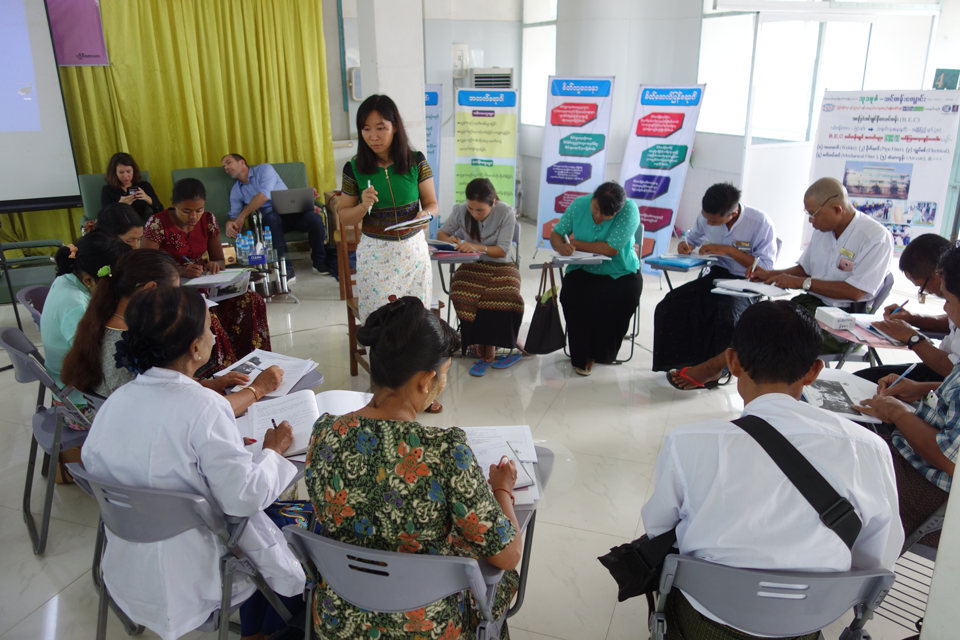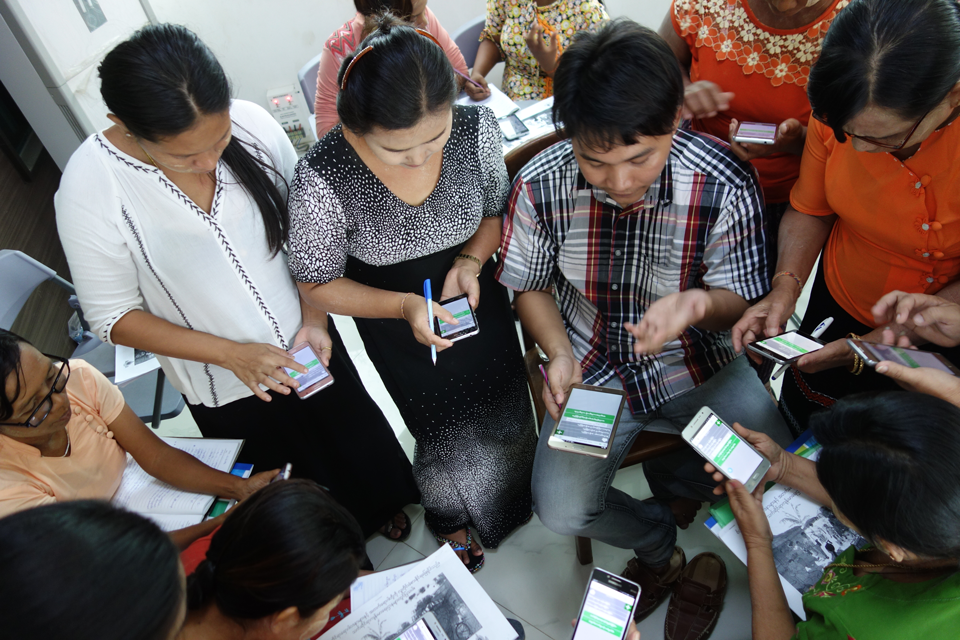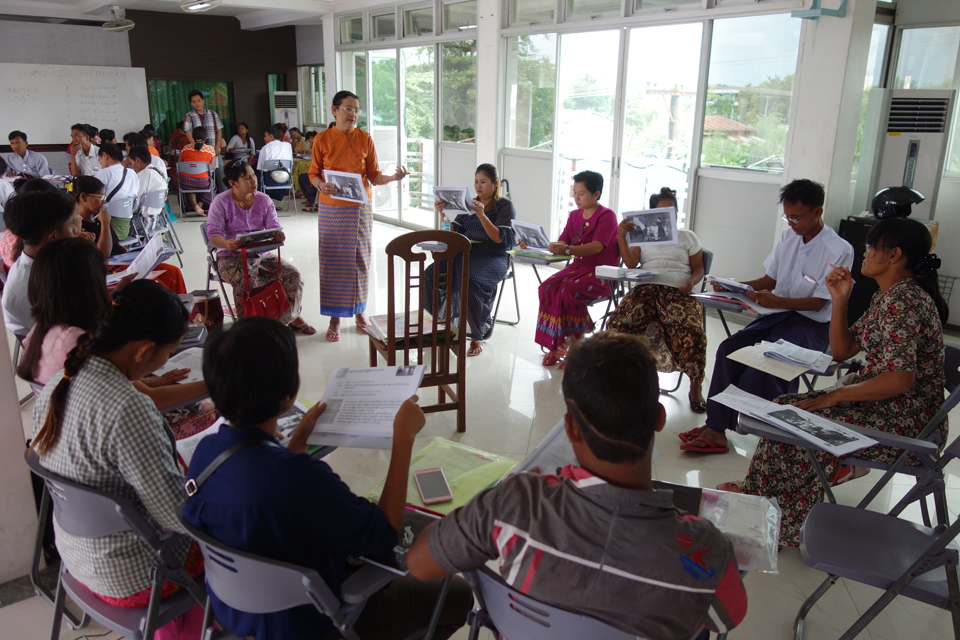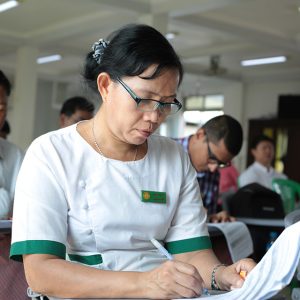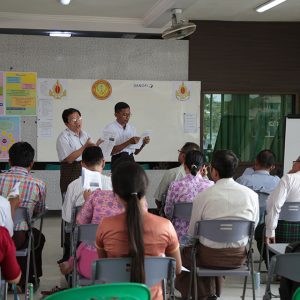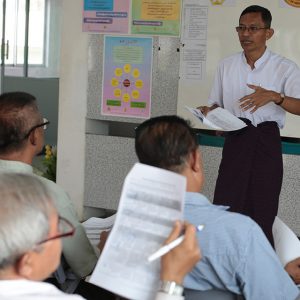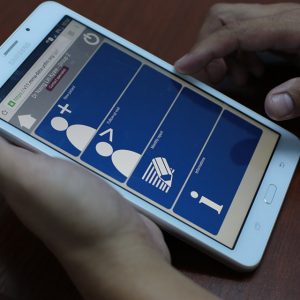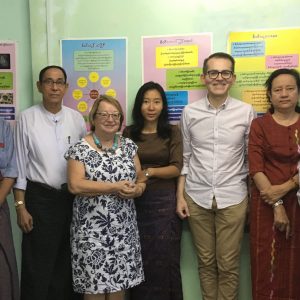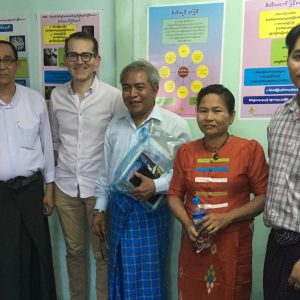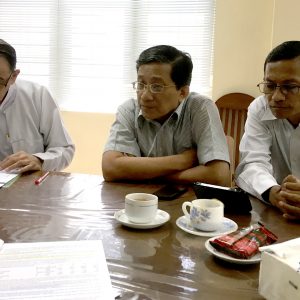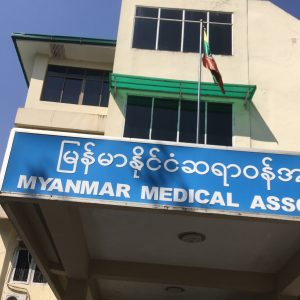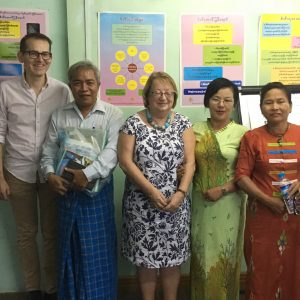Activity report / Key Steps
Key achievements – April 30, 2019
- ≈ 15,000 people have attended information meetings held by CHWs
- 1,220 peoplehave been screened by CHWs and referred to GPs
- 1021 patients (84% of people referred by CHWs) have seen a GP (1844visits in total)
- 935 patients (92% of the people who have seen a GP) have actually been diagnosed with a mental disorder:
-
- psychosis: 452 cases (48% of total cases)
- depression: 261 cases (28% of total cases)
- epilepsy: 222 cases (24% of total cases)
The "Hlaing Thar Yar Mental Health" program
has already gone through the following key steps :
1 : Needs assessment
- High prevalence of mental disorders in Myanmar:
- 8%point prevalence1
- High treatment gap for mental disorders:
- up to 90%1
- Low mental health expenditure
- 3%of total health budget 2
- 75% of mental health budget for mental hospitals3
- Scarcity of specialized workforce3 :
- 3trained mental health workers /100,000 people (psychiatrist, psychiatric nurses, psychologists, social workers…)
- vs 57.82 in US & 74 in UK per 100,000
- Insufficient mental health training:
- 1% of total GP training time2
Ref: 1. Win Aung Myint et al. Myanmar; Routledge Handbook of Psychiatry in Asia. 2016 2. WHO-AIMS Report on Mental Health in Myanmar. 2006. 3. WHO - Mental Health Atlas 2011

2 : Contrat signature
3 : Overall design and development of program – Aug 2013- Oct 2016
This is 3-year pilot program, which combines an integrated approach at the community level leveraging existing staff and resources, with the use of new technologies (smartphone, tablet, telemedicine), to improve access to mental health care in Myanmar, was initially developed by the Myanmar Medical Association and the Myanmar Mental Health Society in collaboration with Sanofi . The program’s goal is to reduce by 20% the treatment gap for psychotic disorders (including schizophrenia), major depressive disorder (MDD) and epilepsy, in 24 months, in Hlaing Thar Yar a highly populated township, located in the Western part of Yangon.
The program’s objectives are to:
- Develop skills and competencies of existing community health workers (CHWs) so that they can
- identify people with psychoses, depressive disorder and epilepsy, and direct them to seek care from General Practitioners (GPs);
- support patients and their families; and
- raise awareness and educate the general population about mental disorders.
- Empower GPs, and primary healthcare professionals from the township community health centres to diagnose, manage, support people with psychotic disorders, depressive disorder and epilepsy, and if necessary get advice from psychiatrist and/or refer to mental health hospital.
- Provide township GPs and community health centers with access to a psychiatrist for difficult cases via a simple system of telemedicine.
Program activities include:
- Training 75 CHWs and 90 Primary Healthcare Professionals (including 5 doctors field project coordinators, 40 GPs, 8 Medical Officers, 2 Health Assistants, 19 nurses, 17 Midwives, 3 Lady Health Visitors).
- Providing GPs with electronic tablets, equipped with an interactive version of the World Health Organization Mental Health Gap Action Program (WHO mhGAP) intervention guide, and e-medical records, to manage patients and potentially seek advice from psychiatrists for difficult cases.
- Providing CHWs with smartphones equipped with interactive screening questionnaires and empowering them in their pivotal role in informing the population, combating the misbeliefs surrounding mental disorders, and identifying people with these diseases so that they can be referred to GPs.
Beyond the Myanmar Medical Association, the Myanmar Mental Health Society and Sanofi, this program also involves international partners such as the World Association of Social Psychiatry (WASP) and the Université Numérique Francophone Mondiale (UNFM – World Francophone Digital University, which has been developing distance learning and e-health solutions for healthcare professionals in low-resource countries).
4 : Appointment of Project Manager and start of project – Apr 2017
Prof Khin Maung Gyee was appointed Project Manager in April 2017 and the 6-month preparation phase could start
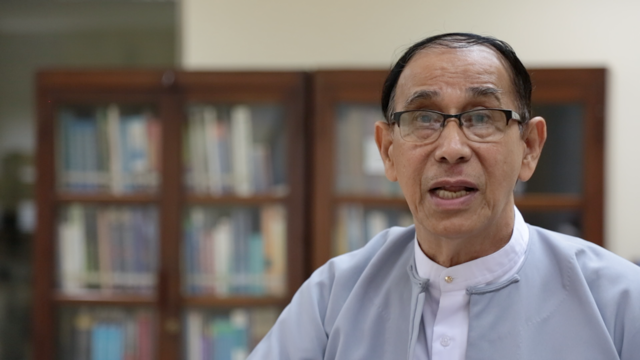
5 : Digital design and development
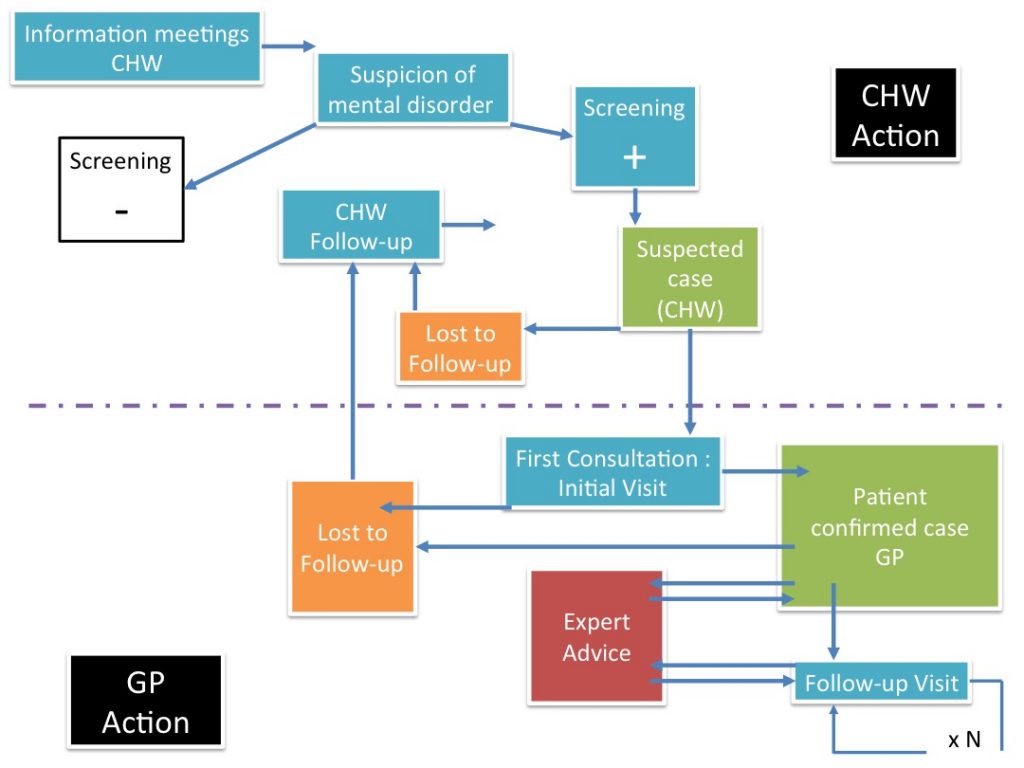
6 : Prototype validation
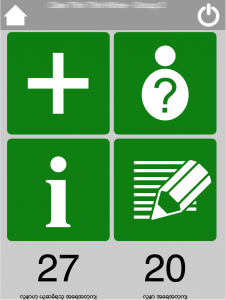
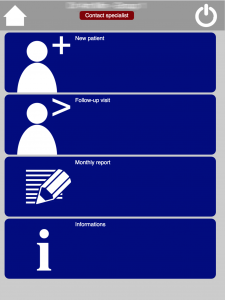
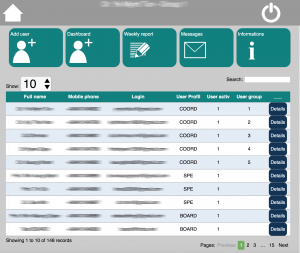
7 : Translation, hardware procurement, team recruitement

